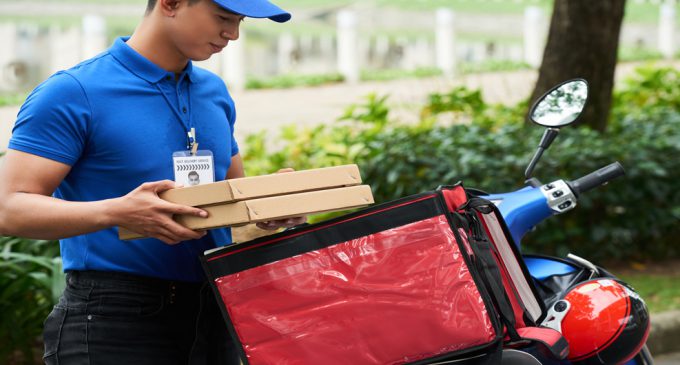SPECIAL DELIVERY

For the commercial carrier insuring an account, platform-enabled delivery raises several exposure-related concerns not shared by personal auto writers dealing with ridesharing. A number of questions remain unanswered. Learn more.
SPECIAL DELIVERY
“Platform-enabled delivery” creates new complexity for auto and GL coverage
By Joseph S. Harrington, CPCU
Okay, now that we’ve figured out how to insure “ridesharing” under a personal auto policy, it should be simple to extend coverage to the use of private autos for deliveries, right? After all, with deliveries, we’re talking about transporting things, not people.
Not so fast. Auto liability coverage for deliveries is not so simple, especially for commercial lines agents and brokers.
As it stands, personal auto insurers can, but are not required to, extend coverage to the use of personal autos as part-time livery vehicles through “transportation network companies” such as Uber and Lyft. For about five years now, there has been a standardized system for classifying different “periods” of driving activity for the purpose of allocating and rating auto liability coverage. “Period 1” starts when a driver indicates that he/she is available and ends when he/she accepts a request for a ride. “Period 2” is the time between accepting the request and arriving at the passenger’s location. “Period 3” is the time when the passenger is in the vehicle. “Period 0” refers to times when the driver is not open to requests for rides.
For those in the food service business, presence on delivery platforms are becoming critical to competitiveness.
Under this approach, liability coverage for ridesharing under a personal auto policy continues to be a one-to-one transaction between an insurer and a driver, no matter what other insurance may be in place. Coverage applies to specified vehicles and (for the most part) specified drivers as it always has; the only thing different about ridesharing is the purpose of driving, which is recorded objectively through a ridesharing app.
Three parties
Among the latest developments in online services is the rapid expansion of “platform-enabled delivery”; i.e., networks of individuals who make themselves and their vehicles available to make deliveries on behalf of businesses.
The trend is most prominent in food service, where services such as GrubHub, Uber Eats, DoorDash, and others have become familiar to consumers. For those in the food service business, presence on delivery platforms is becoming critical to competitiveness.
The practice is applicable to many types of deliveries, however.
Although similar in concept to ridesharing, platform-enabled deliveries are activated in a couple of different ways:
- A consumer could order products through an online network, contacting a provider that is registered with the network; or
- A consumer could order products directly from the provider, who then uses an online network to arrange the delivery.
These approaches are not mutually exclusive; a business could use both of them, and nothing would prevent the business from also making direct deliveries with its own vehicles or those of its employees. The delivery platforms may or may not offer auto insurance of their own, and the coverage can vary from one platform to another.[i]
For the commercial carrier insuring an account, all this raises several concerns not shared by personal auto writers dealing with ridesharing:
- Does the use of platform-enabled deliveries create any added or unintended exposure under commercial auto or non-owned/hired auto coverage?
- Is there exposure under a general liability policy for a negligence claim regarding the selection or use of a delivery service that led to damage or injury? (CGL policies typically exclude coverage for auto claims, but negligence claims qualify for coverage.)
- Is there general liability exposure for bodily injury arising from improper handling of items during a platform-enabled delivery?
Beyond that, one could ask if there is first-party coverage for loss to products in the care, custody, and control of platform-enabled couriers. That would be the least of a carrier’s concerns, however.
[i] See Ronald L. Walter, “What Happens if You Are in an Accident While Delivering for GrubHub, Postmates or DoorDash?,” in The Entrecourier, July 19, 2019; accessed at https://entrecourier.com/2019/07/19/do-i-need-insurance-for-grubhub-doordash-postmates/
The author
Joseph S. Harrington, CPCU, is an independent business writer specializing in property and casualty insurance coverages and operations. For 21 years, Joe was the communications director for the American Association of Insurance Services (AAIS), a P-C advisory organization. Prior to that, Joe worked in journalism and as a reporter and editor in financial services.











